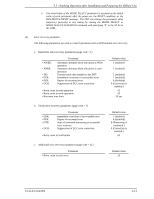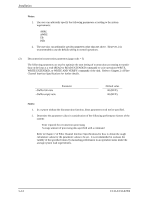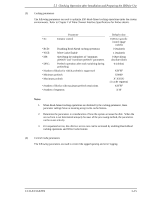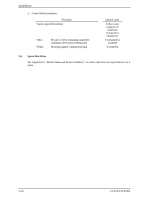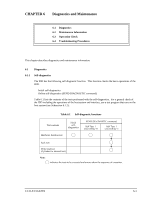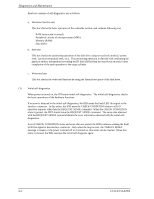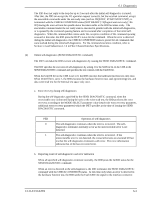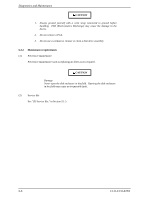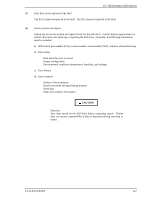Fujitsu MAN3367FC Manual/User Guide - Page 84
Diagnostics and Maintenance
 |
View all Fujitsu MAN3367FC manuals
Add to My Manuals
Save this manual to your list of manuals |
Page 84 highlights
Diagnostics and Maintenance Brief test contents of self-diagnostics are as follows. a. Hardware function test This test checks the basic operation of the controller section, and contains following test. • RAM (microcode is stored) • Peripheral circuits of microprocessor (MPU) • Memory (RAM) • Data buffer b. Seek test This test checks the positioning operation of the disk drive using several seek modes (2 points seek, 1 position sequential seek, etc.). The positioning operation is checked with confirming the physical address information by reading the ID field (LBA) from the data block on track 0 after completion of the seek operation to the target cylinder. c. Write/read test This test checks the write/read function by using the Internal test space of the disk drive. (1) Initial self-diagnostics When power is turned on, the IDD starts initial self-diagnostics. The initial self-diagnostics checks the basic operations of the hardware functions. If an error is detected in the initial self-diagnostics, the IDD sends the Fault LED Out signal to the interface connector. In this status, the IDD posts the CHECK CONDITION status to all I/O operation requests other than the REQUEST SENSE command. When the CHECK CONDITION status is posted, the INIT should issue the REQUEST SENSE command. The sense data obtained with the REQUEST SENSE command details the error information detected with the initial selfdiagnostics. Even if CHECK CONDITION status and sense data are posted, the IDD continues sending the Fault LED Out signal to the interface connector. Only when the loop is reset, the TARGET RESET message is issued, or the power is turned off or re-turned on, this status can be cleared. When this status is cleared, the IDD executes the initial self-diagnosis again. 6-2 C141-E133-02EN



